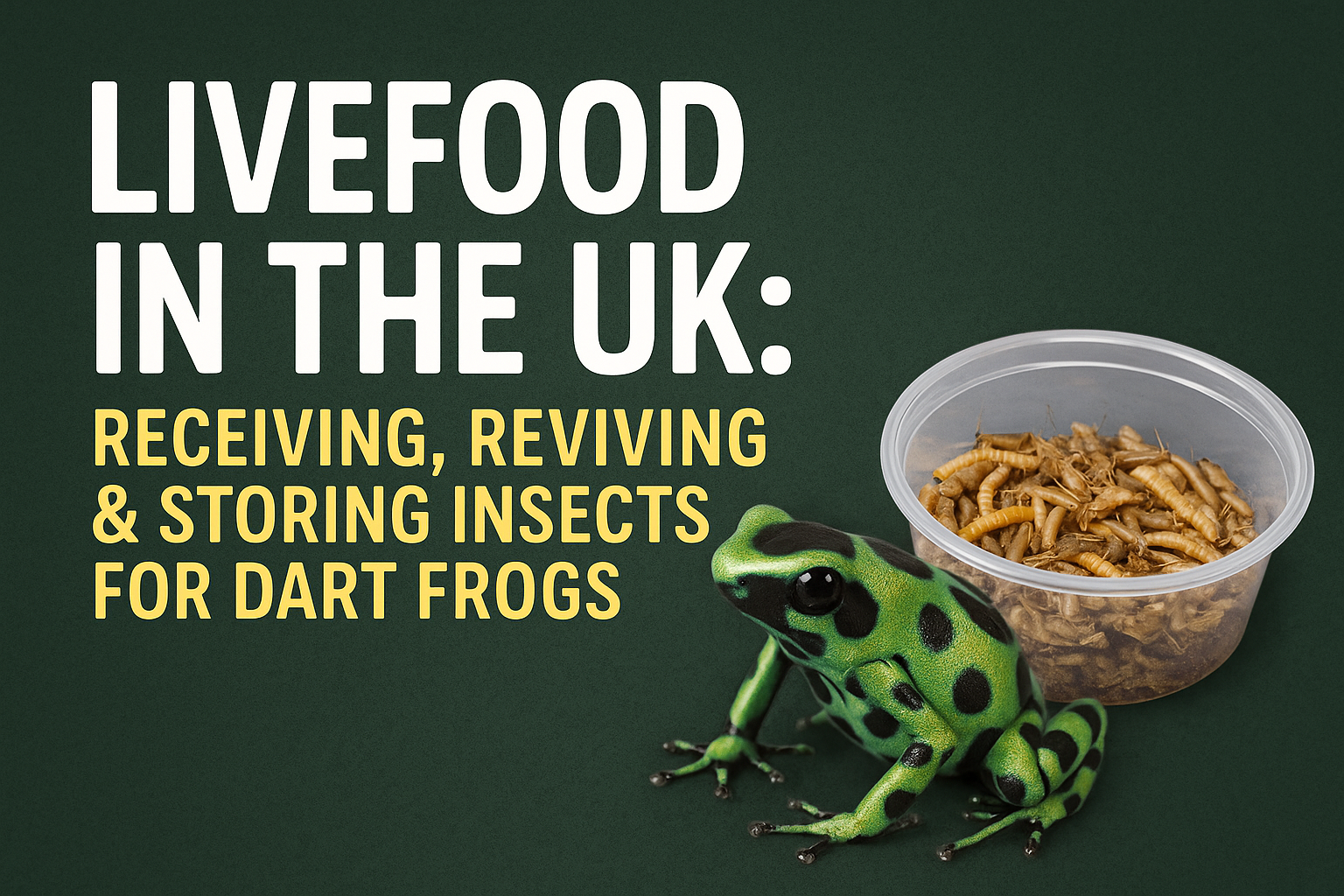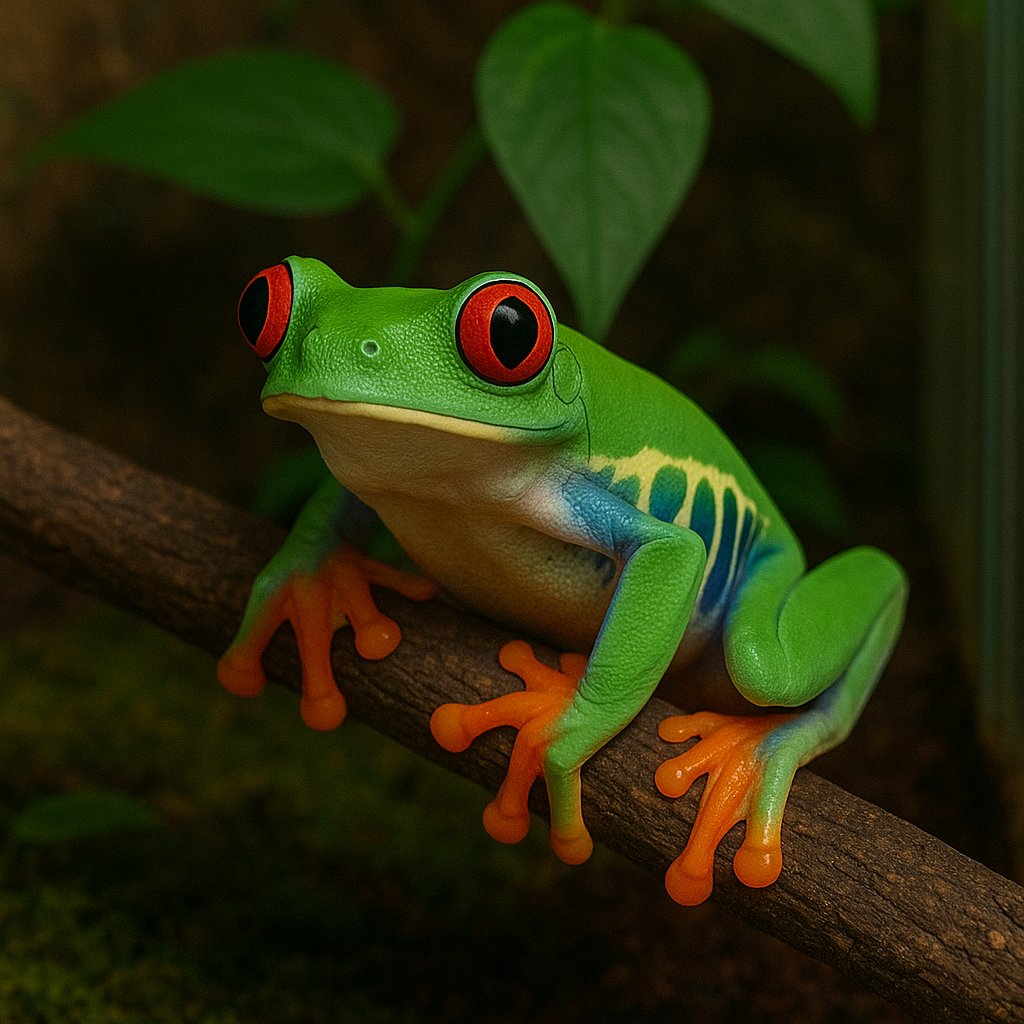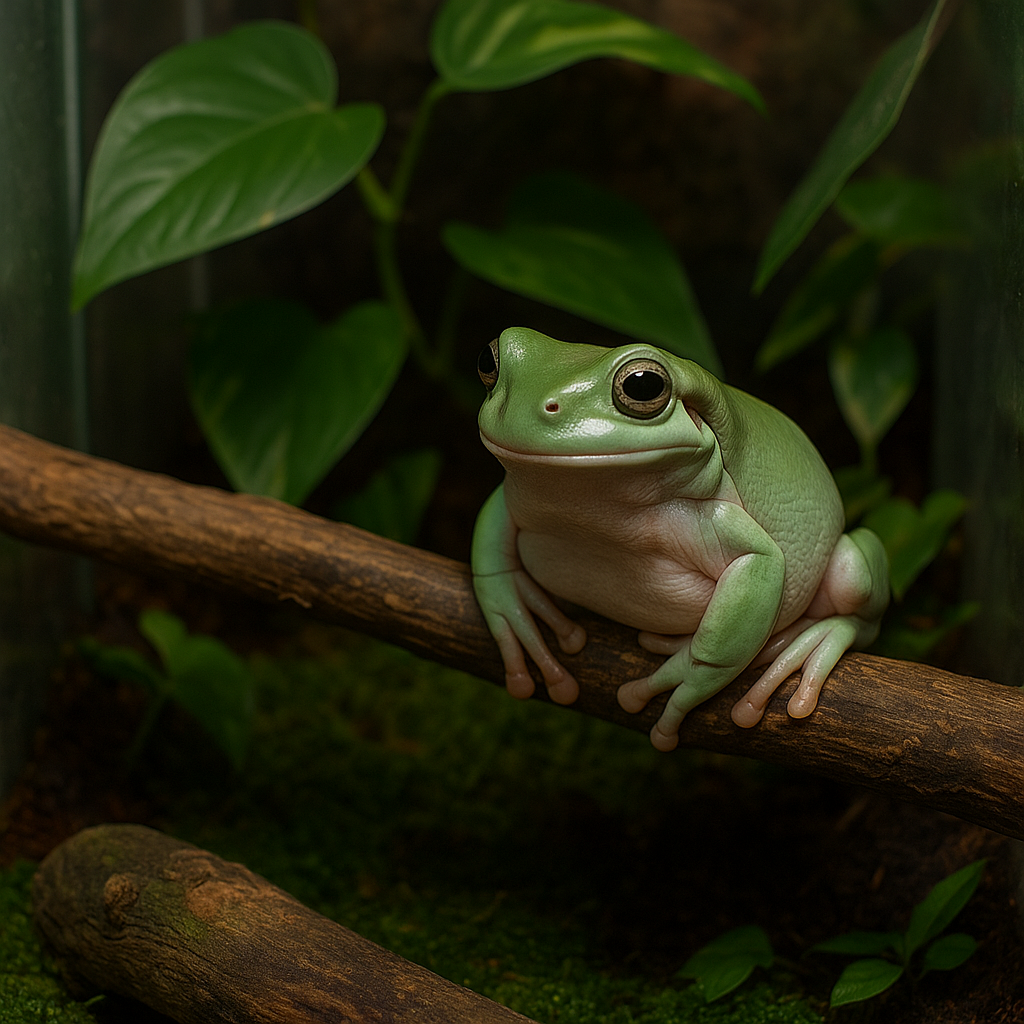Livefood in the UK: Receiving, Reviving & Storing Insects for Dart Frogs
Livefood orders can have a bumpy journey. This guide focuses on UK deliveries, quick triage on arrival, and storage routines that keep fruit flies, springtails, and other feeders productive.
On delivery day: quick triage
- Warmth first: In winter, let parcels come to room temperature before opening—sudden warm air can shock chilled insects.
- Hydration & ventilation: If containers look sweaty or stale, crack the lid for 5–10 minutes in a draft-free spot.
- Photos: If there’s a problem, take clear pictures right away in case you need to contact the seller.
Drosophila fruit flies (melanogaster & hydei)
- Revive: If sluggish, gently tap the culture to loosen clumps and give them an hour in a warm room (20–24 °C). Keep buffer cultures—try D. hydei flightless fruit fly cultures (32 oz) as a spare.
- Split: If the culture looks crowded or wet, seed a fresh pot with 50–100 adults to hedge your bets.
- Storage: Keep on an open shelf, away from direct sun. Too cold stalls production; too hot crashes media.
- Mites: Use mite paper barriers and avoid stacking wet cultures. Quarantine suspect pots away from the main shelf.
Springtails
- Carbon source: Offer a sprinkle of yeast or a tiny bit of high-quality fish food.
- Moisture: Keep substrate damp, not waterlogged. If the top dries, mist lightly and vent the lid.
- Seeding: Establish multiple tubs so one bad swing doesn’t leave you empty-handed. Harvest cleanly with the 3D‑printed Springtail Collection Riser to keep soil out of feed cups.
Isopods
- Arrival: Move to a ventilated box with a moisture gradient—one end wetter with moss, one drier with leaf litter. A 10L ventilated tub is a solid starter.
- Food: Offer oak/beech leaf litter and a small piece of cuttlebone for calcium.
- Temperature: Most common species are happiest near room temperature; avoid radiator heat.
Crickets & roaches
- Revive: Provide warmth, sliced carrot/potato for moisture, and fresh egg crate for climbing.
- Smell control: Regularly remove wet frass; keep ventilation up to prevent ammonia build-up.
Dealing with DOA or stressed shipments
Most sellers want same-day photos and order numbers. Be factual, show the container and a close-up, and explain the steps you tried. Many will replace or credit if the parcel was clearly temperature-damaged. For persistent gnats around culture shelves, a fungus fly trap (vivarium‑safe) keeps numbers down.
Simple weekly routine
- Check cultures every other day; top up food lightly rather than in big dumps.
- Keep different species on different shelves to reduce cross-contamination.
- Label pots with dates so you can rotate before they crash.
Want to go deeper on springtails? Read Springtails for dart frogs: the complete guide.
With a bit of triage and good storage habits, UK livefood becomes reliable rather than a race against the delivery van.



